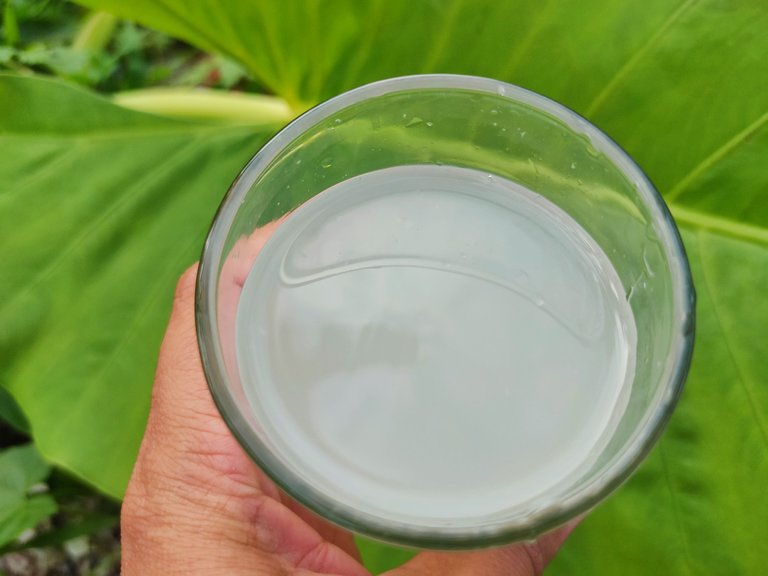The past weeks had been so very busy, so a sight in the countryside while having a road trip is therapeutic, and a taste of fresh and natural coconut wine of the locals is just so satisfying!
There were a few wonderful things that happened on my weekend but in this blog, I want to highlight how we locals gather and harvest our delectable coconut wine fresh from the Coconut Tree. Thanks to my in-laws I was able to witness how to have our version of Jungle Juice-the Coconut wine or Tuba.
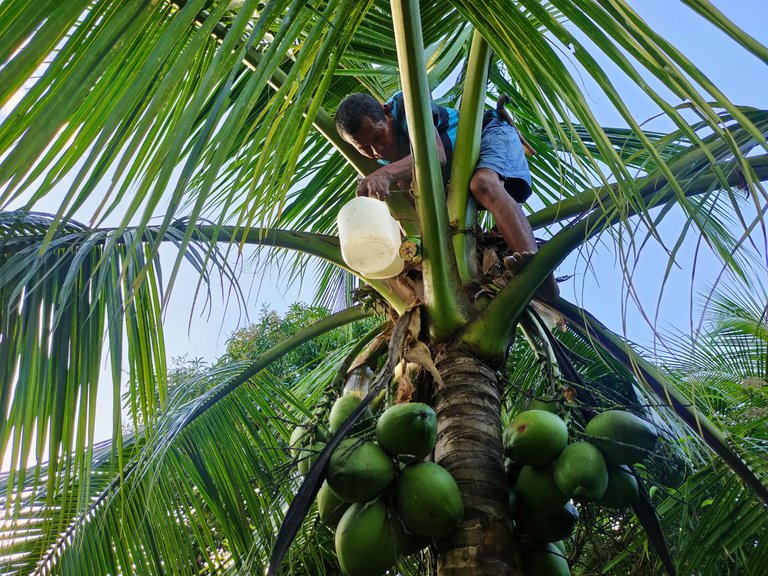
Let's have some refreshing views of the country road and skies on our route before going to the coconut farm first!
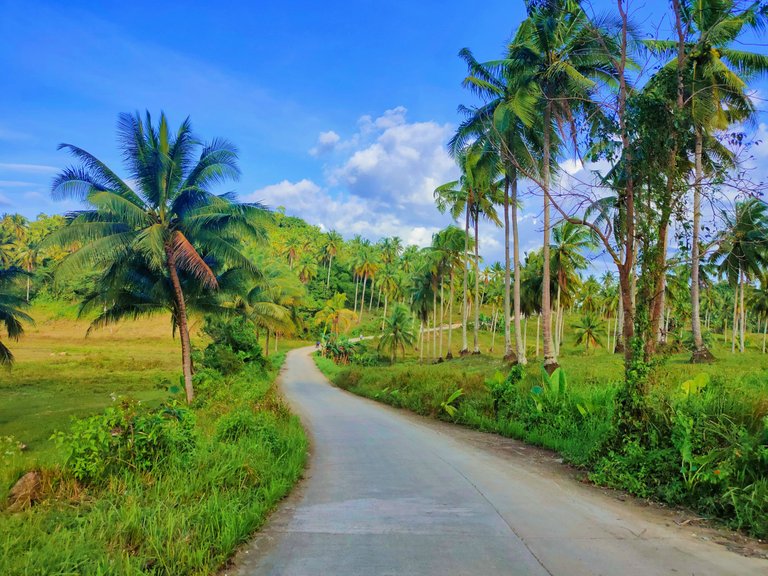
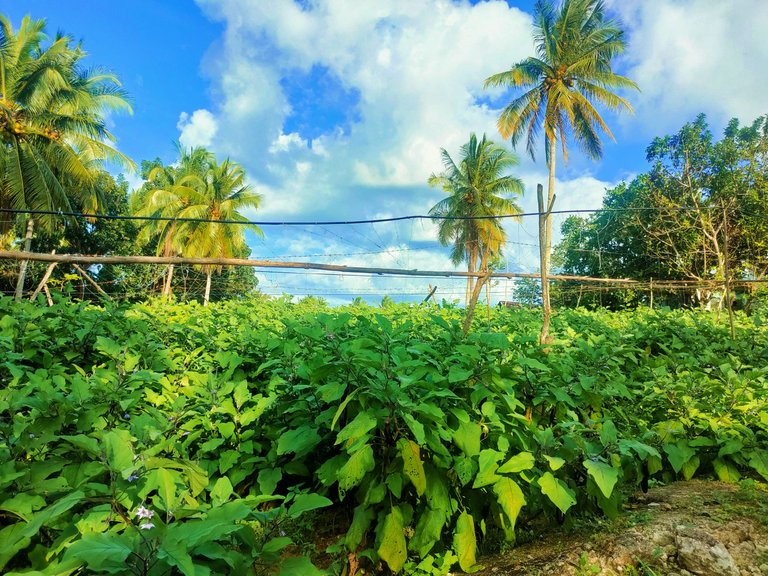
Imagine the taste of vinegar on your tongue. Now imagine a strong taste of it with a mixture of alcohol. That is close to our Months-old Tuba or Coconut Wine, but today I'm sharing the fresh one, the freshly harvested wine, the sweetest one that even bees and a few insects couldn't resist.
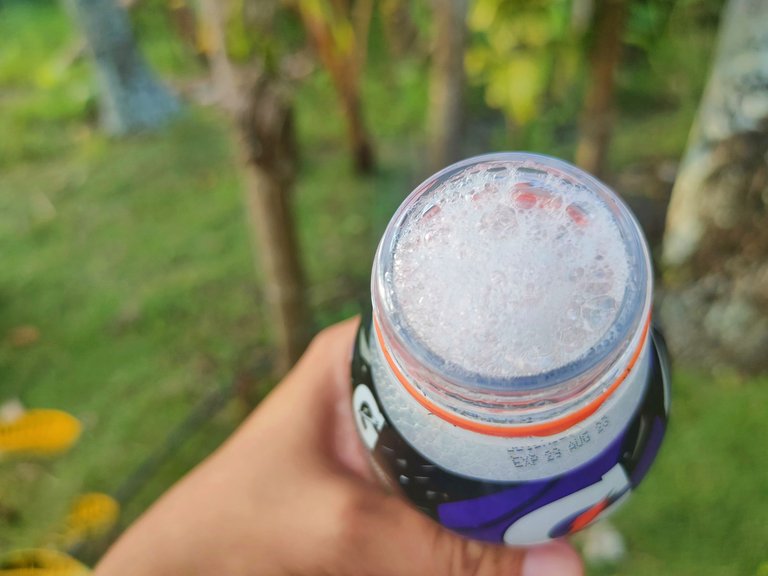
My in-laws have been making/harvesting coconut wine for a month now however I hadn't caught the right time to see him doing it, not until today. So when my husband and I learned that he is harvesting some of the wines today, we immediately take a reroute from our road trip to finally witness the process and most importantly quench our thirst with the very sweet fresh coconut wine!
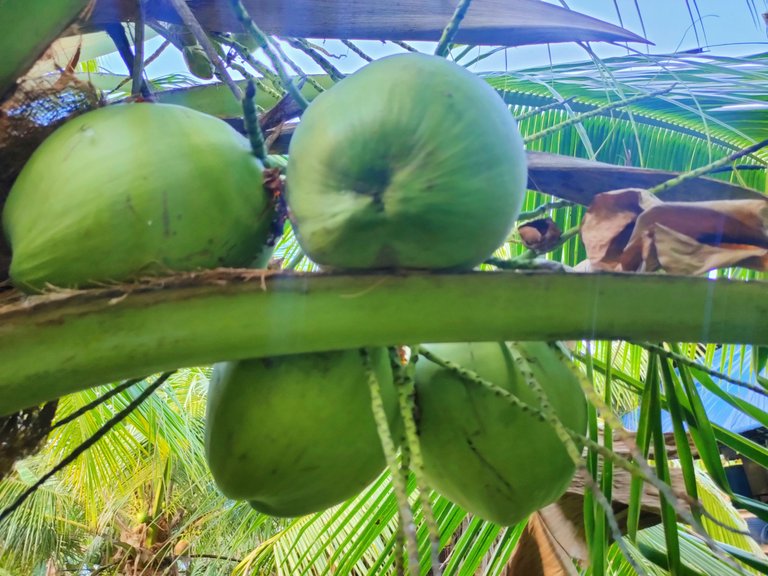
What is Tuba or Coconut Wine?
Just like any wine, a Tuba is a coconut wine that passed through a process of fermentation and distillation that is done naturally. If freshly harvested from the tree, its taste is as sweet as sugar and its color is milky white, but if it's already a day old or more its taste starts to get sour and sour. So if it is a month old or a year old the Tuba becomes a Bahalina a very strong and hard liquor and its color gets darker red-orange too.
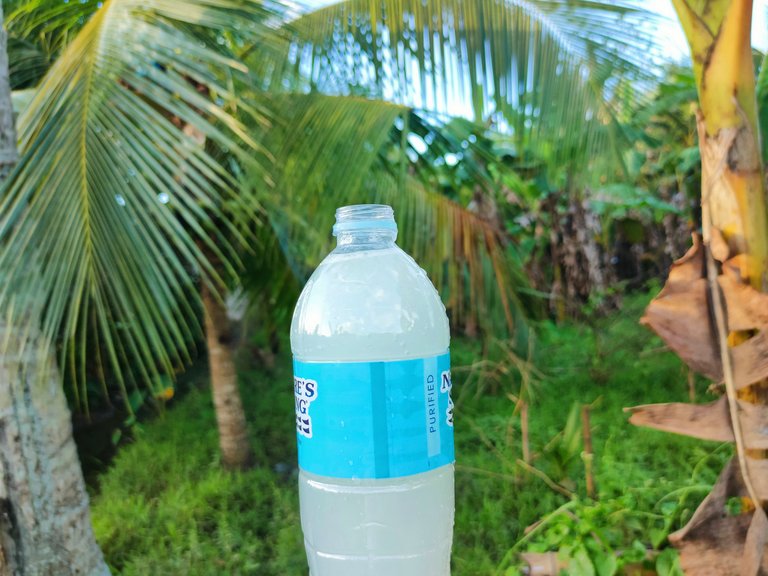
In my place, the locals ferment the Tuba wine to make it a strong vinegar by placing the container in direct sunlight. While it is also common that some locals added a red color (from a bark of a tree)to the wine to have a reddish effect.
My father-in-law led us to the coconut farm and on our way, he let us choose which coconut tree we want to try the wine from, the Bilaka (dwarf coconut) or the native tall coconut trees. Of course, I choose the dwarf one so that we could see clearly how the Tuba is gathered.
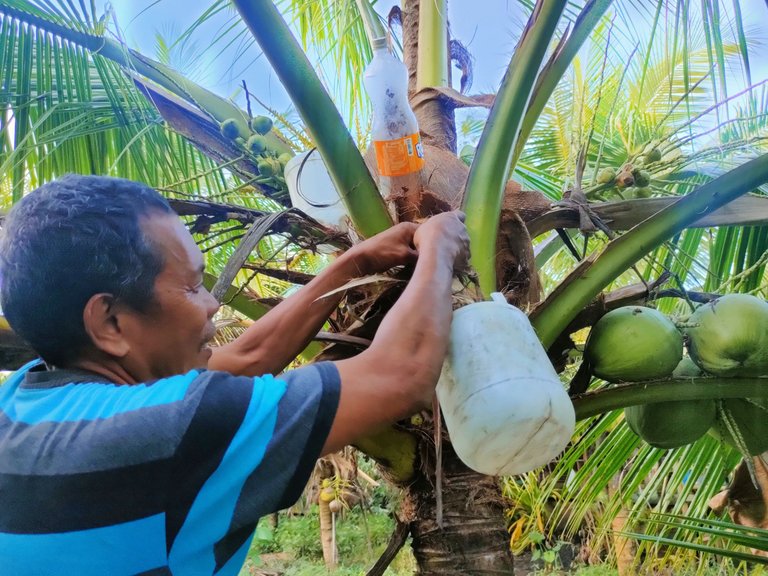
So let's go and get some Tuba!
My in-law immediately check the coconut trees one by one and checked his container if it was full already. The process of harvesting seemed so easy because he had set up everything, and just like a baby who's very curious about the things he first sees, I asked a bunch of questions to fill my curiosity.

How to get these juice/wines?
To get this Tuba from the Coconut Tree, a Manananggot (tuba harvester) should cut the Coconut flower and collect the liquid sap with a container, Usually, after cutting the flower it is tied together and bent for the liquid sap to flow down directly to the container.
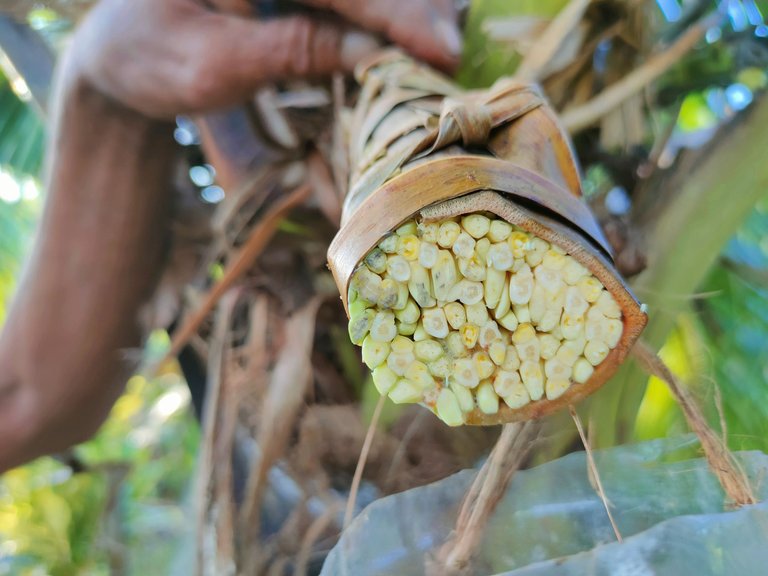
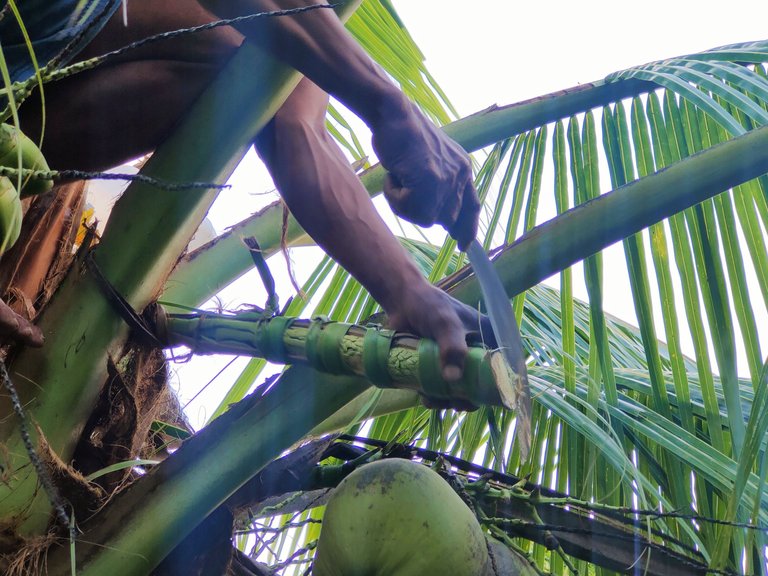
The container must be securely tied to the tree so it will not fall if it gets loaded with the juice. It is left up on the tree the whole night to store plenty of juice.
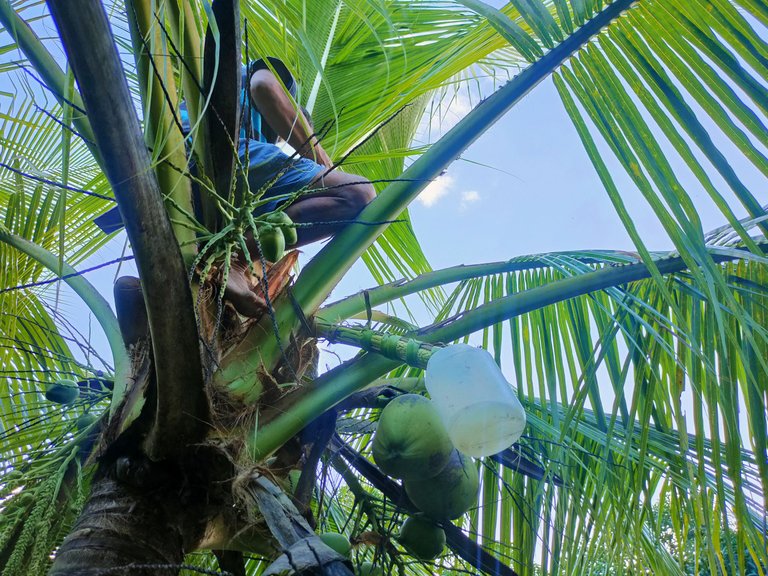
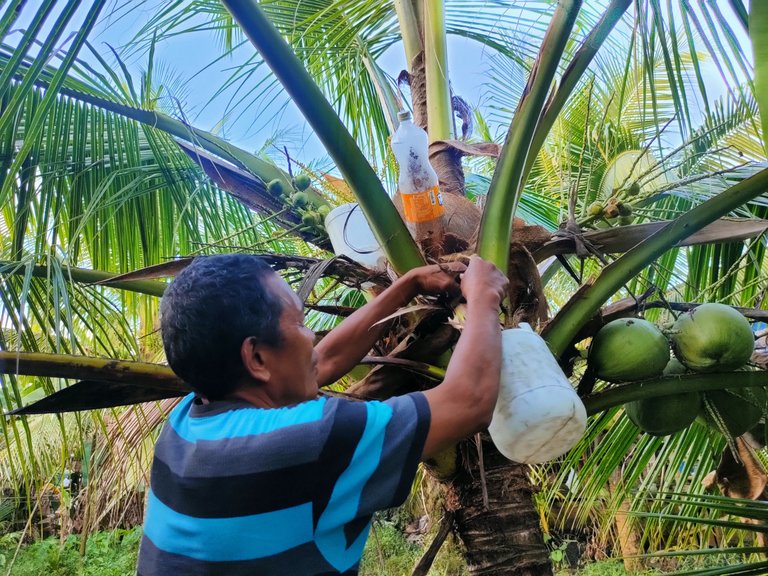
On the next day, the harvester will check the container and harvest the stored juice. After harvesting, he then cut again the coconut flower to have a new and fresh tip and for the new coconut sap to flow down.


This process is repeatedly done until the coconut flower will not or could no longer produce juice anymore.
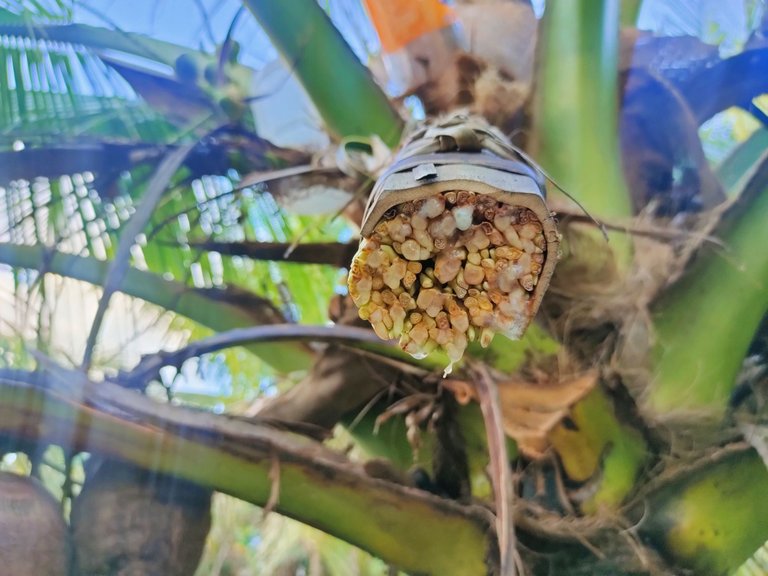
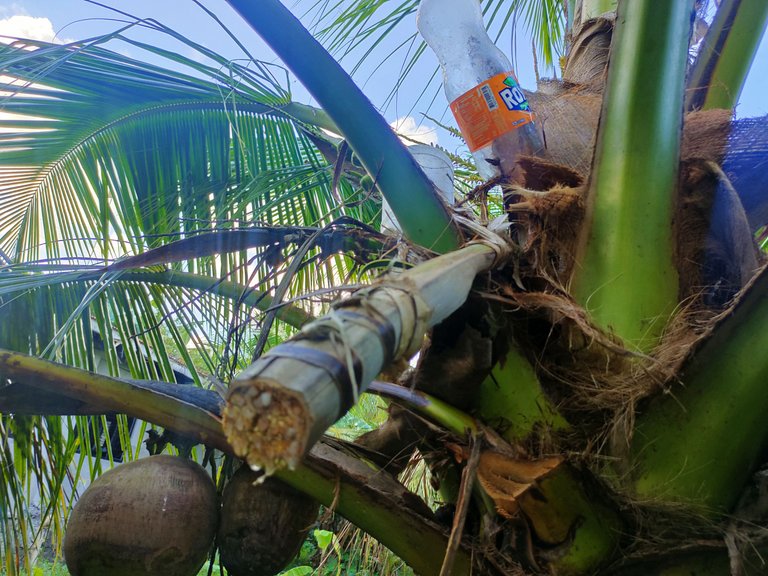
When my father-in-law harvested the juice from each of the coconut trees. He transferred the juices to the container that we brought.
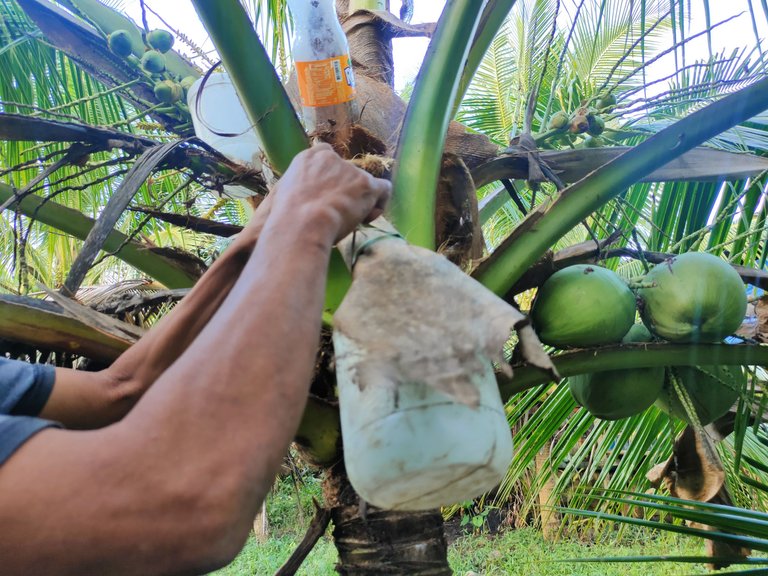
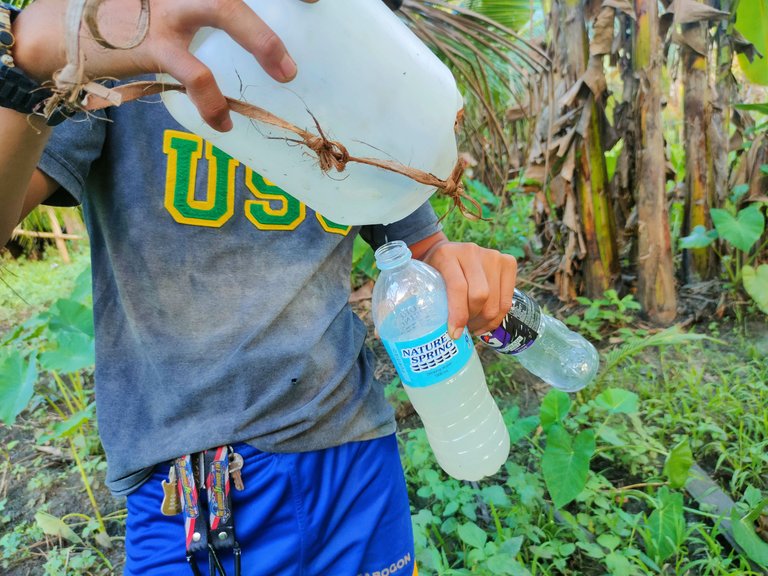
He said some trees produce a lot of juice while others are only very few. And this is true for the Native Coconut trees over the dwarf trees. He also added that coconut trees produce a huge amount of juice during nighttime compared to the daytime.
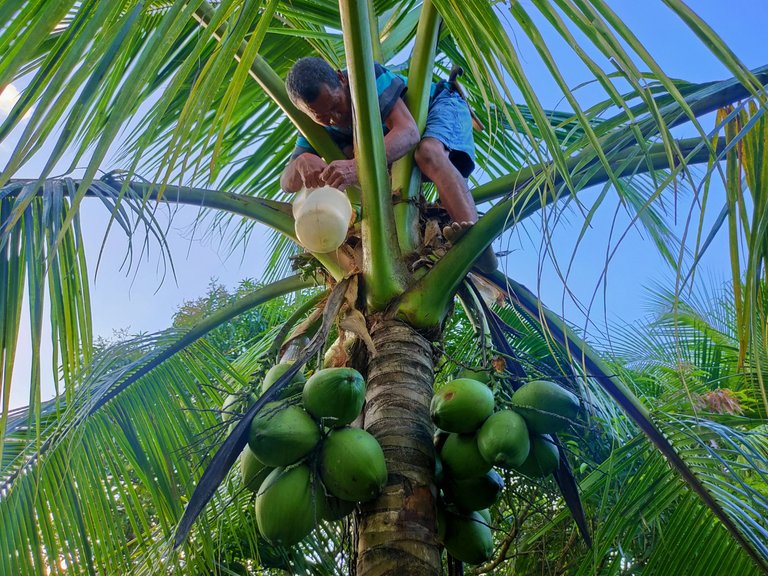
I am a Tuba lover so I ignored the hearsay that there are plenty of bees and insects that found their way into the container full of fresh coconut juice. The thought of it getting dirty with those drowned insects and bees (worse rats and flies) wants me to vomit all the Tuba I have drank since immemorial. Haha! But guess what, Hell it's TRUE!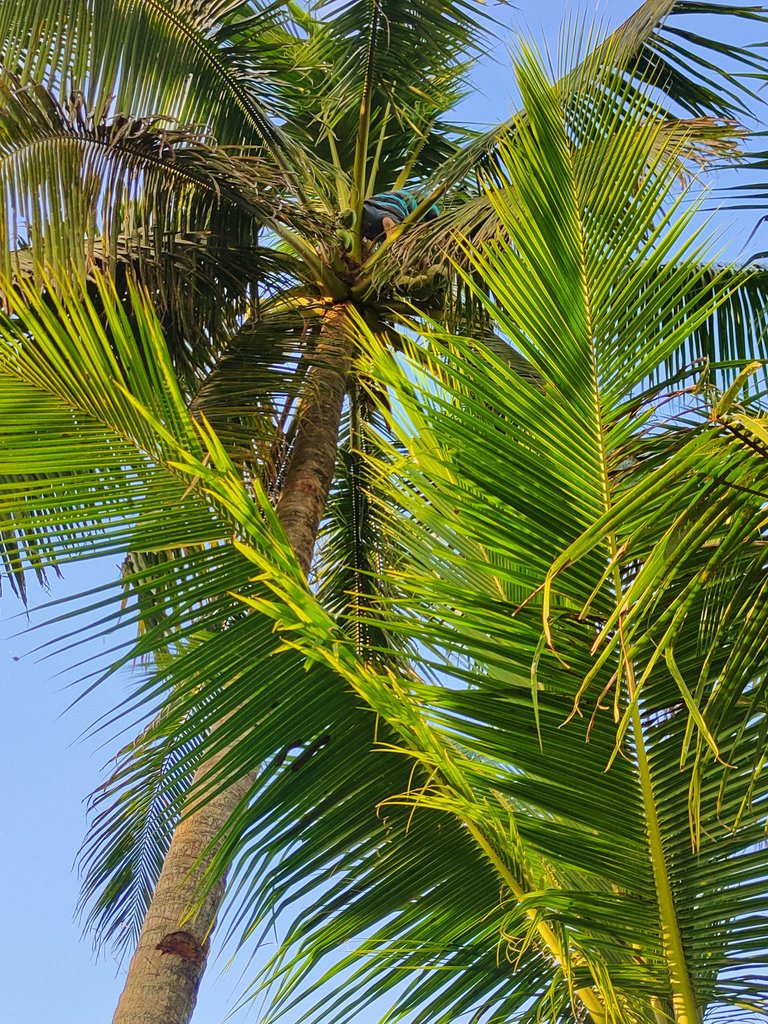
The Bees and insects as Ingredients!
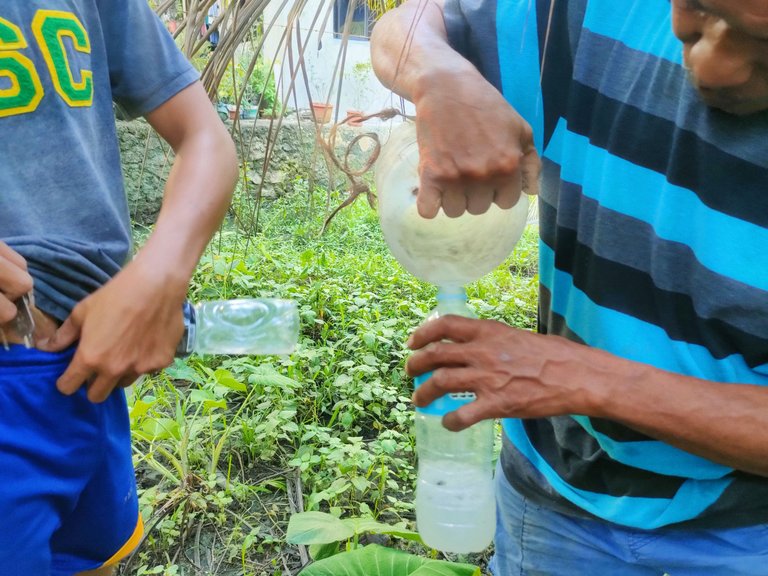
I just saw it with my own two eyes! The Tuba we just harvested has an insect as big as a fly, floating on it! I was torn between accepting the drink or throwing it away, but my in-law explained that the sweet nectar of the coconut flower is attracting the bees and the insects to get in, so it normally happens. So the harvester must secure the lead of the container with some nets or clothes to filter those outsiders. Obviously, my father-in-law didn't! For the rats and flies, he said that's being exaggerated. Thankfully!
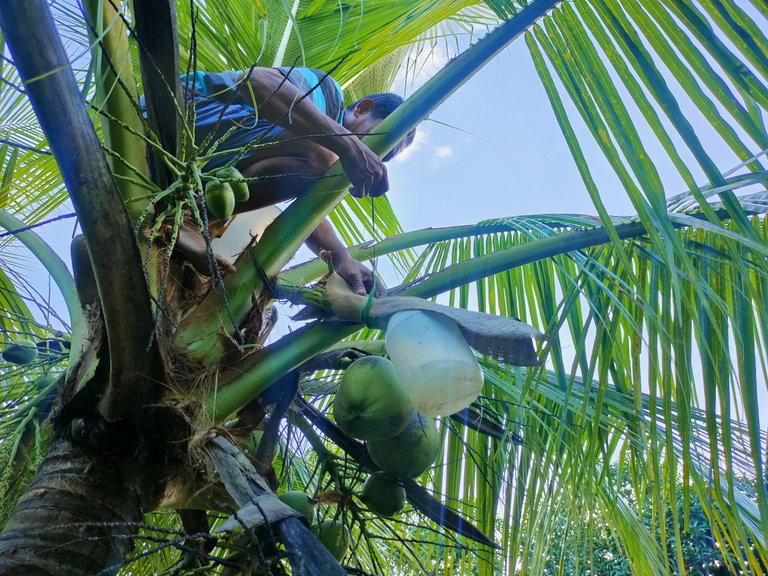
Cheers!
We brought home a 1 Liter of Tuba and happily drink it over a good conversation. In every sip of it, I could feel its sweetness on my tongue and a hot sensation in my throat. Normally I only drink 1 glass of it, but this time I finished 2 glasses! I just couldn't resist its sweetness!
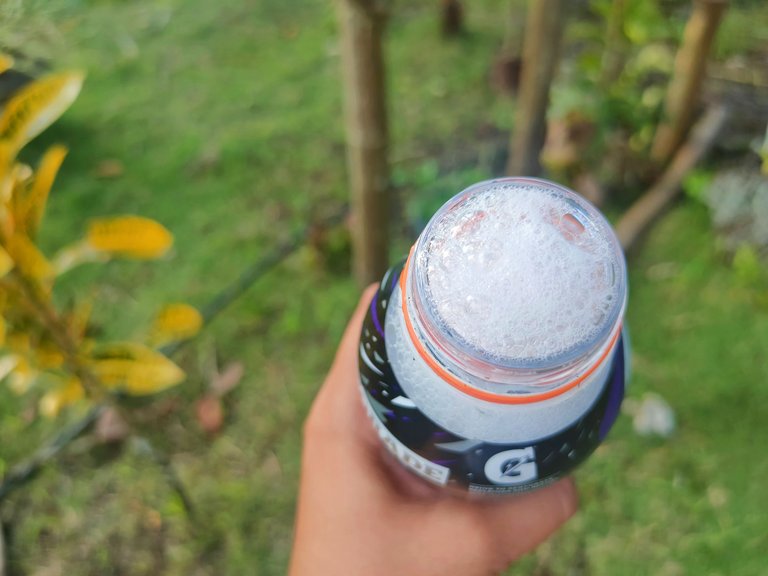
That's it for this weekend's wonderful experience of discovery! Thank you so much for reading! Hope you are all safe and well always.
Warm smiles from @callmesmile.
Cheeeeersss!!!
